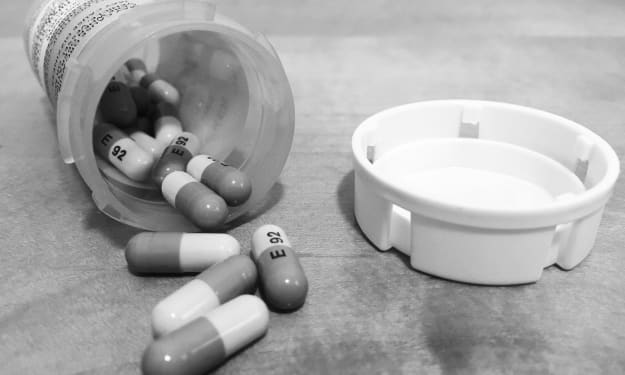How to Become a Wine-O (Without Really Trying)
These days, millennials are all about wine. Here’s how to hop onboard with all the generation Y-ers without having to spend all your hard-earned money or become a snob that nobody wants around.

Like most early-twenty-somethings, my first glass of wine was a red solo cup filled with Carlo Rossi Sangria, poured from a 1.5 liter jug (Another similar and relatable experience: Franzia). As suggested by the serving size and the quality, this wasn’t really wine as I would come to know it, but it was the beginning. I thought, “Well this isn’t so bad; it’s better than beer, and it tastes like juice!”
I think this is how most people start out drinking wine. Not many people like the taste of alcohol when they first try it, especially beer or hard liquor. A lot of people never grow to like alcohol at all. While I do enjoy beer (especially those creamy stouts), and while a gin and tonic is my go-to mixed drink, I have a special fondness for wine because I have cultivated my own interest in it and have followed my own instincts when it came to deciding what kind of wine I enjoy.
I wouldn’t be a true female, recent post-grad, if my first favorite wine hadn’t been pink Moscato. That sweet, sugary drink was the first time I genuinely enjoyed alcohol, instead of seeing it as a tolerable social lubricant. So, having drunk my fair share of sweet, sugary, and cheap wine, I can tell you for a fact that there is, unfortunately, such a thing as bad wine. I never wanted to believe this either, but after about two years of drinking only wine that came in double-sized bottles that cashed out at $11.99, I started to question my decisions.
Let me just state right here and now that I will never actually hold the type of alcohol someone chooses to drink against them. I may jokingly judge you, but to me alcohol preference is like music preference – deeply personal, and in the end only exists to be enjoyed, so who am I to genuinely judge? However, I knew that there was more to this culture of wine-drinking than guzzling large cups of fermented juice that left me feeling only slightly tipsy. It was time to start figuring out the elusive secrets held so dearly by those who sipped $25 pours in crystal glasses with their pinkies up.
My approach was simple: try a lot of wine. There was no timeframe and there was no ultimate end goal. The goal, if any, was to start developing a sense of what I personally liked. I had always heard words like “dry,” “fruity,” “tannins,” and “legs” thrown around, but I really didn’t understand them until I started exploring wine on my own. Being a college student, I wasn’t exactly in a position to join a wine club, go to wine tastings, or buy fifty-plus dollar bottles. However, I was in a place where I could make some decisions, so I decided to become slightly more selective.
My junior year, I moved into an off-campus apartment that was about three blocks from a small, Italian market (dangerous, I know). They didn’t have a large selection of wines, but a few of my friends who enjoyed wine told me that what they had was usually good. To be perfectly honest, you aren’t usually going to find decent wine at a chain grocery store until you know what exactly it is you’re looking for. Finding a relatively affordable place that makes some knowledgeable decisions for you in terms of initial selection is a good place to start.
Starting with what was available to me location-wise, I started my adventure with Italian wines. I didn’t buy a bottle frequently, but when I did, I always made sure to buy something that was 1) unfamiliar to me, 2) another brand of a type I had enjoyed before, and 3) cost between ten and fifteen dollars. Sorry, folks, but the chance of getting a bottle of wine that isn’t objectively terrible for less than ten dollars is pretty slim. If you want to start knowing more about wine, you kind of have to accept that now. It’s not a point of snobbery, it’s just simply true.
I had discovered by this point in my life that very sweet wine gave me a headache (yes, what a stunningly original revelation). Thus, I started experimenting with what my vast experience had taught me were “drier” wines. Lo and behold, they were amazing. I realized that alcohol didn’t have to be sweet to be delicious, intriguing, or exciting. I realized that there were different textures of wines, different levels of acidity, different ways it could taste while being drunk versus the flavor it left in my mouth when it was gone! There were pink wines that weren’t necessarily cloyingly sweet, and there were red wines that didn’t taste like decades-old Manischewitz! There were certain wines that tasted better with my beloved pasta dishes, and there were wines that went better with cheese and crackers! I had turned into Goldilocks, because suddenly I had drunk enough wine to know, at least personally, what was “just right.”
Without really realizing it, I had experimented and tried enough different wines that I had started to develop and understand my own personal palate preferences. This, in the end, is the key. It doesn’t matter whether you like sweeter wines or drier wines, red wines or white wines, wine spritzers or mulled wine (or all of the above). What matters is whether you can take a sip of wine and make some kind of informed comment about it based on your own taste. You don’t have to agree with everyone else, and just because someone who is supposedly a “wine connoisseur” says a wine is good doesn’t mean that you have to enjoy it. (Side note: beware of people who label themselves as “wine snobs.” They’re only fun for about one glass, but after the second glass they usually turn the magical experience of drinking wine into some kind of horrible, self-important, historical-scientific-philosophical lecture that leaves you wishing you had downed an entire bottle.) What makes you look (and feel) legitimate when it comes to wine is having experience, because then you can intelligently compare and contrast. I never spend more than about fifteen dollars on a bottle of wine (and usually less), but when I genuinely tell people that I enjoy a nice “Montepulciano,” or that I only really like “dry Rieslings,” they are usually impressed.
So grab that twenty-dollar bill you were going to spend on a 30-pack of Natty Light and instead go buy yourself a bottle or two of wine. If you get an Italian Nero d’Avola this time, next time get a rosé from South Africa. If you used to hate red wine, but haven’t drunk it in over a year, try one out with a friend who does like it (sometimes your tastes will change! And if they haven’t, your friend has a bottle all to themselves!). Buy a proper wine opener and a fun wine glass that brings you joy. Most importantly, experiment, own your opinions, and have fun. Before you know it, you too could be the friend turning down that plastic cup of Sutter Home, and saving your used wine corks to make Instagram-worthy coasters.
About the Creator
Katja Alexandra
Actor. Writer. Pasta lover. Wine enthusiast.






Comments
There are no comments for this story
Be the first to respond and start the conversation.